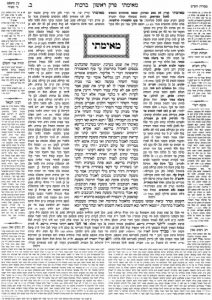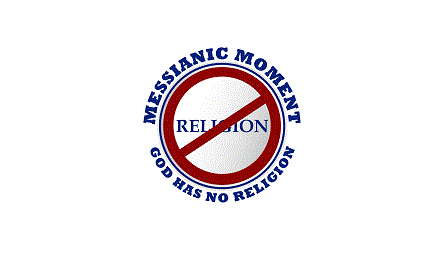The Talmud is a wonderful book of Jewish wisdom and biblical exegesis. Wikipedia describes it this way:
The Talmud has two components; the Mishnah (c. year 200 CE), a written compendium of Rabbinic Judaism’s Oral Torah; and the Gemara (circa year 500 CE), an elucidation of the Mishnah and related Tannaitic writings that often ventures onto other subjects and expounds broadly on the Hebrew Bible.
If you prefer to watch a video, click on this link: Watch the video.
The origin of the Talmud begins with the origin of the Torah- both were given to Moses on Mount Sinai, the difference being that the Torah was written down and the Talmud was passed down orally. Within Judaism, the Talmud is extensively used by the Orthodoxy and is often given more importance than the Torah, itself. The study of Talmud starts at about the same age as the study of Torah, between 6 and 9 years of age, and the Talmud is considered to be scripture by many Orthodox Jews.
The Mishna is where we get Halacha (The Way to Walk), which are the rabbinic rules that Jews live by. These are traditional activities that stem from the rabbinic interpretation of how we are to follow the laws God gave in the Torah. For example, the Torah tells us to treat animals humanely and which animals we can use for sacrifice, but nowhere in the Torah does it tell us how to humanely kill the animal. The Talmud explains how to perform the Shechitah, which is the traditional way to kill the sacrifice: it is quick, nearly painless and very humane. This is just one example of how the Talmud “fills in the gaps” in the Torah regarding the manner in which we are to live according to God’s instructions.
The Talmud is, as I stated above, a wonderful book. But it is not scripture, and here is the simplest proof I have of that- God’s word never changes; it is the same yesterday, today and tomorrow. However, within the Talmud, you would be hard pressed to find any two opinions that match.
Here is a sample of a page from the Talmud:

This page has at its heart the Torah, which is surrounded by rabbinic interpretation and commentary, which is itself surrounded by other rabbinic interpretation and commentary. At one point in Jewish history, there were two schools of Talmudic interpretation: the House of Shammai and the House of Hillel. They both lived during the time of Messiah, being born in the last century BCE and dying sometime in the first century CE. Their two “houses” had very different thoughts, but together have been critical in the shaping of the understanding of Talmud, today.
Now, let’s get back to the original question: what is the Talmud, really? The Talmud, really, is a commentary on the Torah. That’s it.
It starts with what God tells us in the Torah then expands and expounds on it, telling us what the Rabbi making the commentary believes the Torah portion he is interpreting really means, and how we should go about living that instruction in our daily life.
There are many other things in the Talmud, as well. There is mythology, superstitions, and demonology. Some examples of the superstitious traditions within Judaism that come from the Talmud are the breaking of the glass when getting married, spitting three times when hearing bad news, and placing salt in the corner or rooms and pockets to ward off evil spirits.
The main purpose of the Talmud is to help us follow God’s instructions properly, and that is, in my opinion, its saving grace. Despite the traditions it creates, the superstitious activities and the confusion, it is a good book to have and to study in order to better understand the Jewish mindset. And the wisdom of the Elders that it contains is of immeasurable use for all those who want to understand both Jews and God better.
The Talmud is an important book, full of wisdom and tradition which define the Jewish mindset and lifestyle. Use it for your Bible study and to better understand the basis of the traditions of Judaism; respect the wisdom and ignore the drek.
In the end, though, the Talmud is a nothing more than a commentary and, as such, must be taken with a grain of salt: you can use some of the salt in your pocket.
Thank you for being here, and please share me out to your friends and family. Subscribe to the website and my YouTube channel, and please don’t hesitate to comment on what I say: all I ask is that you be nice.
Also please check out the Gofundme campaign I am currently running to help send Bibles, prayer shawls and Bible study materials to three Messianic Synagogues in rural Uganda. Here is the link:
Help Messianic Ugandans
Until next time, L’hitraot and Baruch HaShem!
